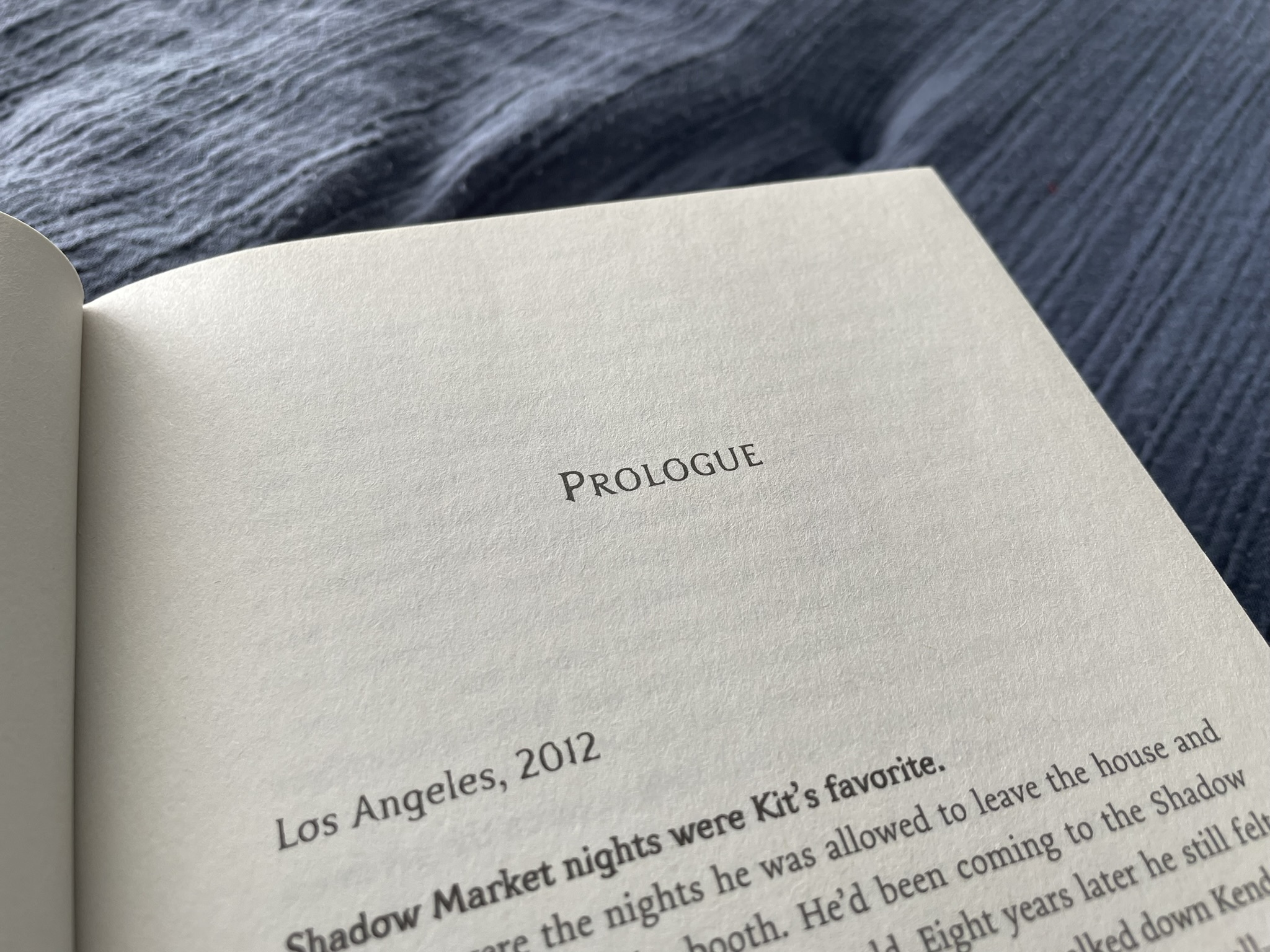Prologues in books can be both tricky and controversial. You may be wondering how to write a prologue—or if you should.
They can be a great tool for hooking readers or setting up a conflict, but many readers admit to skipping prologues.
Today’s post will cover the meaning and purpose of a book prologue, how to know if you need one, book prologue length, and tips on how to write a prologue for your book that will engage your readers. We’ll also discuss some ideas and examples of book prologues.
What is a book prologue? What is the purpose of a prologue?
A prologue is a section of the story that comes before the first chapter.
I like to think of it primarily as a hook to get readers to keep reading. It can set the story’s stakes and tone, introduce characters that don’t come into the story until later (like the bad guy), foreshadow something to come, or provide background information on the story’s conflict.
That said, prologues are not for info dumping. They should not read like an encyclopedia entry. I don’t blame readers for skipping prologues like that.
Is a prologue necessary?
No, prologues aren’t always necessary. There are a few questions you should ask yourself if you’re considering including one.
The first question to ask yourself when writing a prologue is could this be the first chapter? If the answer is yes, make it the first chapter. You don’t need to complicate it more than that.
Similarly, ask yourself, if the reader skipped this, would they miss essential events or information? Would they be confused later in the story? If the answer is no, you don’t need the prologue.
The next thing you should consider is the genre. Thriller, mystery, suspense, historical fiction, and fantasy commonly have prologues, and people who read those genres won’t be surprised when they open up to a prologue.
If you’re writing in another genre, your readers are less likely to be tolerant of a prologue. This doesn’t mean you can’t have one, but you should consider whether you can include what’s in the prologue in the story in another way.
How long should a book prologue be?
Keep it short.
If you want readers to skip your prologue, the best thing you can do is write a lengthy one.
However, when it comes to a prologue’s length, there’s no rule for how long it can be. But it’s best to keep it brief and snappy if you can. Some people suggest keeping it under the length of an average chapter.
To know if your prologue is too long, you can ask your beta readers or editor if at any point while reading the prologue they lost interest or wanted to skip to the first chapter. If they did, you may want to make your prologue shorter.
Truthfully, you can make it as long as you want—provided that it holds the reader’s attention.
How to Write a Book Prologue
Here are 4 tips on how to write a prologue.
Hook Readers with Action
Prologues are one of the unique places where you can jump into an action scene without giving the reader much of an explanation. Use this to hook readers with an exciting scene.
You can even do this if the book you’re writing isn’t an action-heavy book. Action doesn’t necessarily mean swords drawn, pistols blazing. Action can just be movement—something’s happening, the characters are doing something.
An action-focused prologue gives readers a glimpse of what they’re in for later in the book and draws them into the plot.
Establish Questions
Questions are one of the best ways to get readers to keep reading. So just as you do with the first chapter, use your prologue to get your readers asking questions—questions they have to keep reading to find out the answer to.
What’s going to happen next? How are they going to get out of this situation? Are these two characters going to get together? Will they find out who the murderer is?
Questions like these drive stories, so be sure to introduce some in your prologue.
Don’t Info Dump
As I mentioned earlier, your book prologue should not read like a page out of an encyclopedia. Prologues are not the place for heavy worldbuilding or info dumping. If you do that, your readers will be bored.
It’s a hard truth, but unfortunately, no one cares about the worldbuilding or backstory as much as you do. That’s why it’s best to introduce that kind of stuff throughout the story where it is relevant.
Prologues are best when they are plot- or character-driven. Readers want to see things happening. They want to meet cool characters. They don’t want to read a textbook.
Differentiate From the Rest of the Story
If your prologue is very similar to the main story, your readers may wonder why it isn’t the first chapter or otherwise included in the main story. So it’s best to make it different from the main story.
To do this, you can:
- Use a different POV
You can share a character’s perspective that readers don’t or rarely see in the rest of the book. It can even be the villain’s POV.
- Set it in the past or future
Perhaps the prologue takes place decades before the novel. You can use it to show readers something that happened that deeply affects the story. Or perhaps it takes place far after the book, showcasing the effects of the story on the future. If you choose to set it in the past or the future, it can be a great way to foreshadow—just don’t give too much away.
- Use a different style
If your story is told in first person, you could use third person for the prologue. Or perhaps the prologue is a letter or journal entry from one of the characters. It could even be some kind of document. Your book’s prologue is a great place to experiment and try something new.
Book Prologue Examples and Ideas
If you don’t already have an idea for your prologue, you probably don’t need one. But if you want to experiment with writing a prologue anyway, here are some ideas based on examples of prologues from well-known books.
A Key Event
Many books feature a key event that takes place before the story starts. This event is usually why the characters are where they are at the beginning of the story.
The Way of Kings by Brandon Sanderson begins with a prologue showing readers the assassination of the king, an event that starts the war the characters are fighting when the story actually begins. It hooks readers with action and showcases the unique magic of the world.
Sanderson has put a unique twist on the prologue though. Each book in the series shows the same day but from the perspective of a different character, so readers learn a bit more about what happened that fateful day with each book.
The Arrival of Something Important
Often prologues show the arrival of something that will set the story in motion.
The classic novel Something Wicked This Way Comes by Ray Bradbury begins with a prologue discussing the year that Halloween came early—on October 24th. While the prologue doesn’t show the arrival of the circus, it hooks readers because we know something has arrived in James and Will’s town and we want to know what it is.
An In-World Document
Some novels revolve around something that’s been documented, so instead of explaining whatever it is, authors just give readers the document.
Unwind by Neal Shusterman begins with The Bill of Life, the solution to the Second Civil War, which states that “human life may not be touched from the moment of conception until a child reaches the age of thirteen.” But between 13 and 18, children can be unwound, a process where the child is both kept alive and terminated.
This prologue hooks readers because they want to know what unwinding has done to the world.
I hope this guide has helped you learn what a book prologue is and how to write one. Happy writing!





